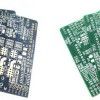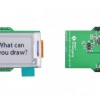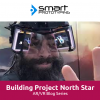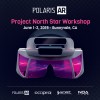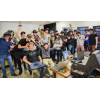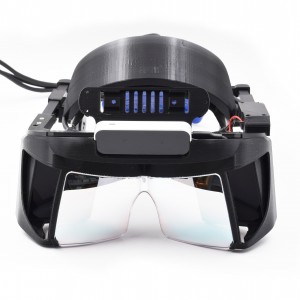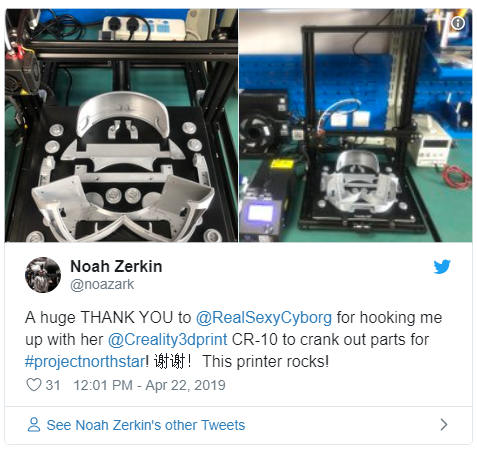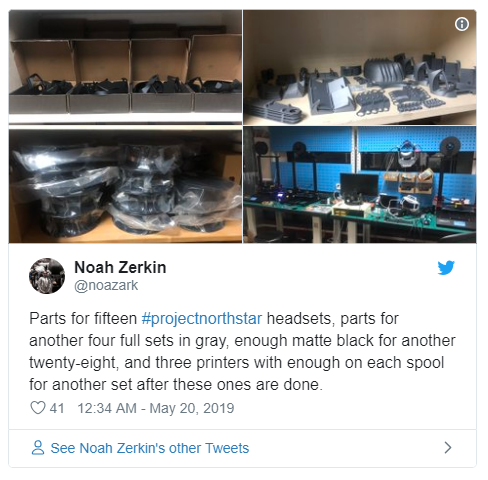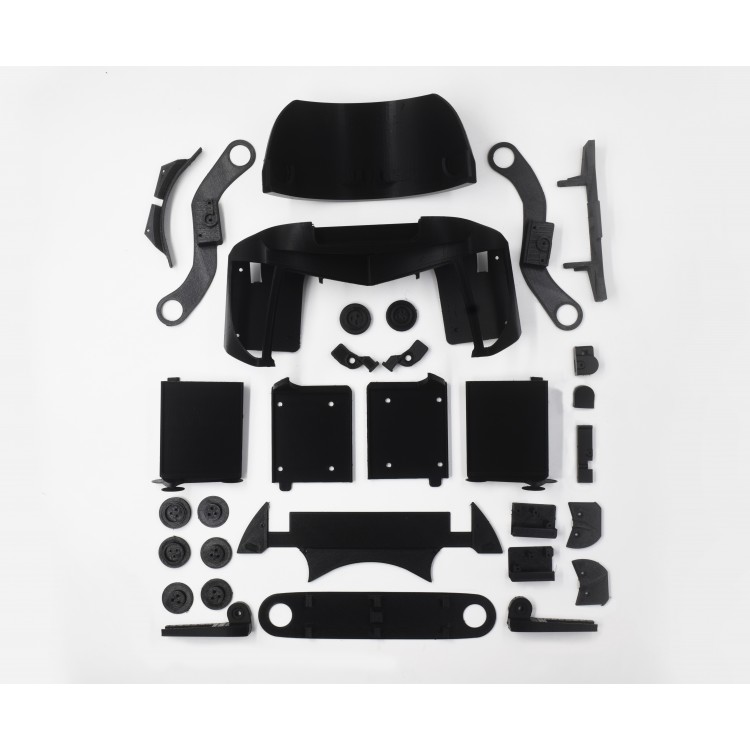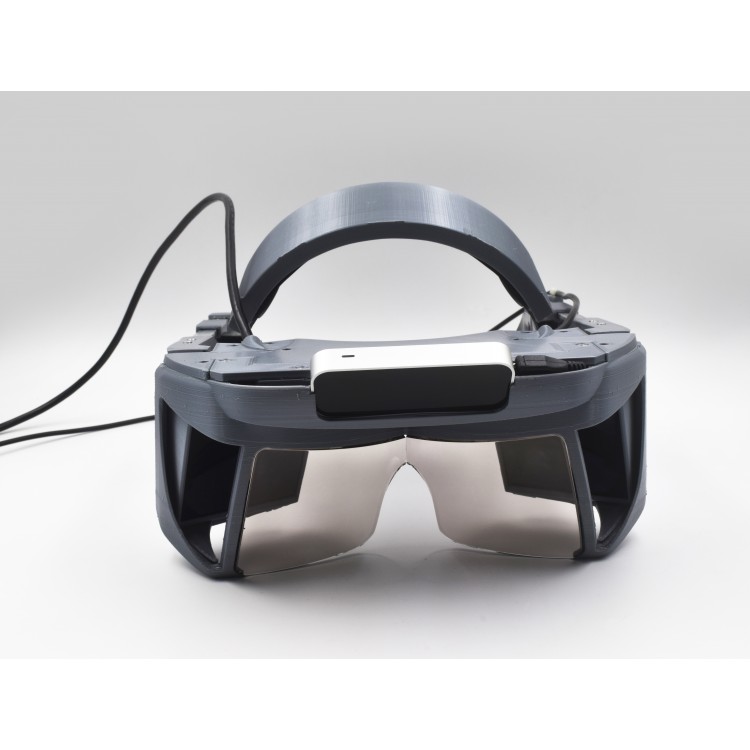First Project North Star Kit now available for the masses - Polaris AR
When David Holz and Leap Motion unveiled Project North Star, in April of 2018, the Augmented Reality community took notice. Off-the-shelf augmented reality headsets like HoloLens cost $3500, and Magic Leap was about to reveal the $2300 price tag for their first headset. Besides optical specifications that put both of those headsets to shame, the real kicker was that this headset could theoretically cost “under one hundred dollars to produce at scale.” On top of that, they expressed their intention to open source their design! Sitting here in Shenzhen, it certainly turned the head of Noah, one of our Project Managers who, before moving here, had been an active member of the Augmented Reality and Open Hardware communities.
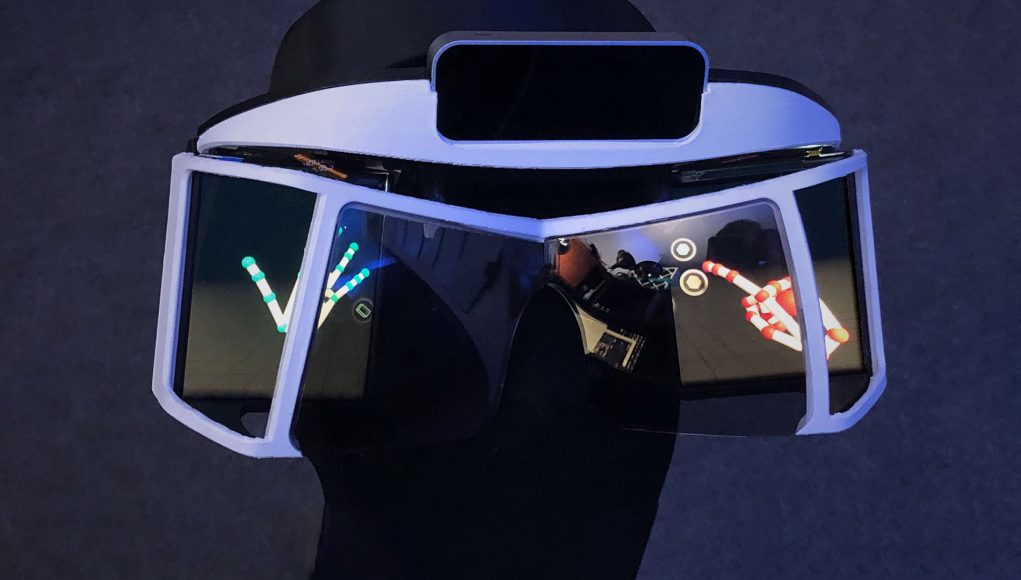
- image by Leap Motion
But when they did finally release the plans for North Star, there were a few caveats that placed the necessary budget an order of magnitude higher than the Benjamin mentioned in that initial announcement.
First, the combiners (semi-reflective lenses) onto which the images are projected had only been prototyped using diamond turning, an expensive form of high-precision milling. Then those combiners required coatings that could only be applied using specialized machinery found only in research laboratories or coating factories. Right there we were looking at a cost potentially over $400... just for the “lenses”.
Second, the displays specified in the North Star design are intended for purchase by large consumer electronics companies producing VR headsets. If a hobbyist could even get the display manufacturer to engage them in a conversation, the minimum order quantity would be well beyond what they could justify purchasing to build their own headset. (You could buy four HoloLenses for what we spent on our first batch.)
Third, the display driver PCB, initially excluded from the open source release, has very tight manufacturing tolerances, putting it beyond the capabilities of many PCB manufacturers, and making it extremely expensive to produce in small quantities. And some of the components weren’t available through the usual distributors like DigiKey or Mouser, and themselves had MOQs of at least one hundred pieces.
So that “under one hundred dollars to produce at scale” began to look more like “can only be produced at scale.”
Well, here we are in Shenzhen. Producing things at scale is what we do here. And while this wasn’t, and still isn’t, a finished product ready to be put on the shelves of Best Buy and sold to average consumers, we recognized a demand for the parts necessary for members of the R&D, Maker, and augmented reality enthusiast communities to try their hands at building this incredible headset at a reasonable price.
After all, with parts specifically designed to be produced using a low-end 3D printer, the potential to add different sensors for enhanced capabilities like 6DOF spatial tracking, PCBs running firmware programmed on top of the Arduino framework, an example software is written in Unity 3D, this really is the ultimate Maker project.
So Noah, the aforementioned Project Manager, deciding to start with the biggest challenge first, forked out the money to have an injection mold made to mass produce the combiners. Then, with the help of our sourcing team, he found a factory that could apply the necessary semi-reflective coating to the combiners. With those first coated samples in hand, he headed to a trade show at the Shenzhen Convention Center (across the street from our offices), found the BOE booth, handed somebody a piece of paper with the display model number on it, and asked for a meeting with somebody who sells it to him. Much to his surprise, the Senior Sales Manager from BOE’s AR/VR Division was sitting in our office a week later.
When demand for those combiners and displays was validated by community response, we decided to go all-in and have the display driver boards produced as well.
With all of the interest from the community, centered mostly on the Project North Star Discord server, we’ve decided to start producing various kits that include critical components for building your own North Star headset. We’re also selling fully assembled and calibrated headsets for those who aren’t interested in the DIY aspect of the project.
The simplest kit is for those who have already purchased displays and driver boards but don’t want to go to the trouble of sourcing the non-printable mechanical components of the headset. This includes all of the nuts, bolts, screws, aluminium rails, rubber parts, padding foam, headband adjuster, etc.
The next kit up includes all of those parts, plus the driver board, displays, lenses, and cables. This kit includes everything you need, so long as you have a 3D printer, to build your headset.
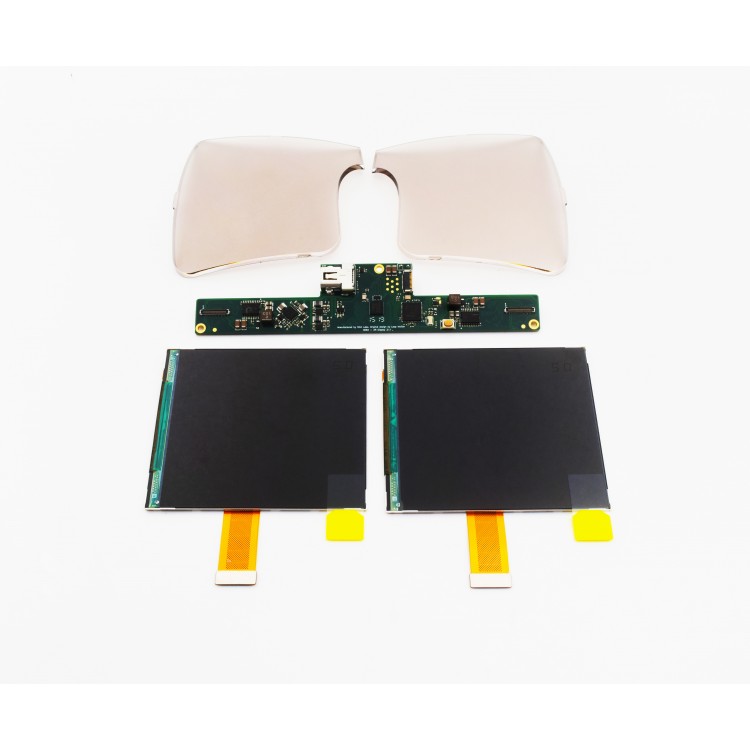
The next also includes a set of 3D printed parts and comes in a really awesome hard case that can be used to easily transport your headset once it’s assembled. This kit comes with everything you need to build your headset, including a set of high-quality screwdrivers, a model knife, and snippers for removing any excess plastic left over from the 3D printing. (You need to supply your own Leap Motion Controller and any additional sensors that you want to use. We’re big fans of Occipital’s Structure Core, which includes 6DOF tracking capabilities and stereo depth cameras.)
And last, but certainly not least, you have the option to have us build and calibrate a headset for you. This headset will be sent to you in the same carrying case that’s included in the kit that comes with the 3D printed parts. (You still need to supply your own Leap Motion Controller and other sensors.)
We’re incredibly excited to be offering these parts and kits to the community, because we know that the future of augmented reality (which is poised to supplant traditional computer displays, smartphones, and really anything that has a screen) is being shaped right now, and it’s important for the world to have high-quality options that aren’t controlled by Facebook, Google, Apple, or any other company that will likely choose to dictate what we can and can’t do with this technology.
Project North Star is still just a development prototype, but it’s functional and awesome and is right at home in the hands of research labs, development companies, and enthusiasts.
Join us at the cutting edge and help shape the augmented world to come.

